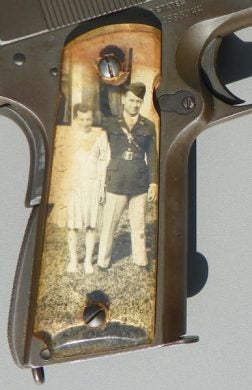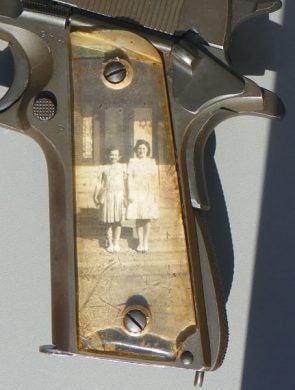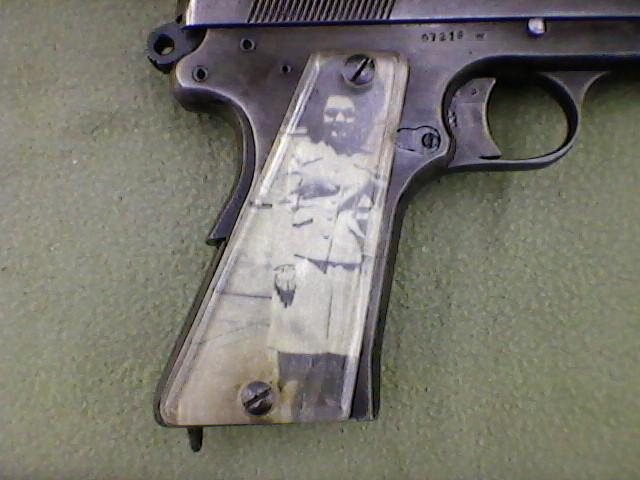This past week a discussion with my junior-higher over a school assignment brought back a laundry list of World War II topics. The assignment was to select a topic from the 1940s for what is, to a junior higher, a lengthy essay. In the end she chose the USS Indianapolis, in part because she met survivors when she tagged along on interviews with me for military articles, but also because it’s a flat-out phenomenal moment in our nation’s history. It’s about more than man-eating sharks, tremendous bravery, and the delivery of Little Boy – you see, without the Indy World War II would not have ended as it did, when it did – but I digress. Another part of World War II was what was known as “sweetheart” grips, and this particular topic seemed like a good one for a daily post.
For generations, service members have tucked away precious photographs through tours around the globe. Pictures end up tucked under helmets, stuffed in pockets – there’s always a method for taking along a memory from home, especially when it’s of a girl. If the service member doesn’t actually have a girl, well, there are always pin-ups, models, and other available images. During World War II, a favored method of not only taking pictures along but having them at the ready was to fasten them beneath clear plastic grips on their 1911s.
Of course, sweetheart grips were not the kind of thing a young soldier could simply order online or pick up at the PX. Soldiers were creative, though, and something else that was a part of WWII plays into the creation of sweetheart grips: trench art. While it’s true that trench art is a practice spanning far more military conflicts than only WWII, it’s also true to say it became far more common during that time. And although some of the more well-known trench art was crafted from spent shells there were and are many other forms of art crafted by service members with time on their hands.

Lucite was used to craft the clear grips that would become known as sweetheart grips. At the time acrylics were still a new creation with Lucite specifically having just been trademarked in 1937. During WWII Lucite was used for the windowshields and canopies of airplanes. Those airplanes were the main source of the clear acrylic for service members making custom grips. If service members came across downed airplanes, they would often salvage pieces for various uses, and the Lucite was perfect for many things.
Once a service member crafted his custom Lucite grips, he would fit a picture to one side and replace the wood grips that came standard on 1911s at that time. Sometimes pictures would be placed on both sides but it was also common practice to leave one side empty. Why? Because it gave a clear window to the pistol’s magazine. The pictures themselves served as more than simple mementos as well. A gun could be easily matched to its owner by the picture beneath its grips. It wasn’t limited to only the standard-issue 1911s, either. Guns seized from the enemy were also frequently fitted with the clear, handmade grips.
Sweetheart grips are an interesting piece of WWII trivia surprisingly few people seem to know. Those WWII service members were the first pistol owners to customize their grips, and they had to put significant work into it (not to mention the minor detail that they were also in combat). Taking the time to handcraft a set of Lucite grips for your 1911 with the susurrus of enemy fire in the background has to be its own level of badassery. Think about that next time you sit in your comfortable chair shopping online for new grips.

 Your Privacy Choices
Your Privacy Choices
